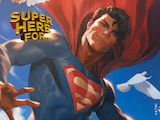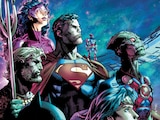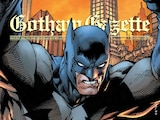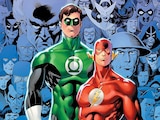It’s been 35 years since Batman came to the big screen, and the 1989 blockbuster is just as relevant as ever. A rare blockbuster that lived up to its enormous hype, Tim Burton’s superhero film unleashed an epidemic of Batmania across the country that never really subsided. Decades have passed and not only are we still talking about the movie, but it’s still getting new tie-in material.
Last year, Michael Keaton reprised his role for The Flash, giving nostalgic audiences goosebumps as he once again slipped on the cowl. We saw the classic Batmobile, heard the original theme and even took a ride in the old Batwing. It was magical.
The world of Keaton and Burton’s Batman has also been expanded with two comic book sequels, Batman ‘89 and the still in-progress Batman ‘89: Echoes. These comics show us what things might have been like if Burton and Keaton had continued to make Batman movies after Batman Returns. They not only take place in the Burton continuity, but they meticulously capture the look, tone and feel of the movies. Reading them, it’s not hard to imagine you’re stepping into a summer movie theater in the mid-1990s.

On the very near horizon, author John Jackson Miller’s upcoming novel, Batman: Resurrection, bridges the gap between Batman and Batman Returns. As Miller teased in a recent interview with us, Resurrection ties up some loose ends from the first film, such as the fate of Alexander Knox and the whereabouts of Joker’s goons. Plus, it also sets up some threads for Batman Returns, like Max Shreck’s rise to power.
So, what is it about the 1989 Batman movie that resonates so much? There have been other acclaimed Batman projects since then, from the much beloved Batman: The Animated Series to Christopher Nolan’s legacy-defining Dark Knight saga. So, why are the Burton movies still getting tie-in material decades later?
It’s important to remember what the state of pop culture was in 1989. These days, we have a big superhero blockbuster in theaters every few months or so, but things were very different 35 years ago. Comic book films were extremely rare and there was never a guarantee that they would be true to the source material.

The last time we’d seen the Caped Crusader in movie theaters was the 1966 Adam West Batman film. (I can’t refer to that version of Batman as “the Dark Knight” because there was nothing dark about him.) Now, personally, I love the Adam West Batman movie, but it’s not a big budget blockbuster. The common public perception of Batman in the 1980s was Saturday morning cartoons like Super Friends and the 1966 BIFF, POW and ZOCK. Of course, the same wasn’t true of that era’s comic book readers.
By 1989, comic fans had classic storylines like The Dark Knight Returns, Batman: Year One and The Killing Joke. These comics showed readers how dark, gritty and adult the world of Batman could be. This was a version of the hero that non-comic people hadn’t met yet…until Tim Burton introduced them to him.
Burton’s film captured the dark tone that the comic books were known for. The movie was also the first time many people saw the tragic murder of Thomas and Martha Wayne. Prior to Batman, the origin had only been depicted in comics and an episode of Super Friends. Yes, Batman took plenty of liberties with the source material, from giving the Joker an origin to connecting him with the aforementioned murder. It also featured plenty of Burton-esque touches and 1980s weirdness that just wasn’t there in the comics. But for the first time, we were seeing the Dark Knight on screen. He was terrifying. He was relentless and intense. He was freaking cool!
That’s what’s so easy to forget. 1989’s Batman changed the public’s perception of the character the world over. All at once, everyone learned that Batman was more than the goofy hero they may have seen on Super Friends. Is it any wonder they fell in love?

Evidence of that love was all over the place in 1989. The iconic Batman insignia was everywhere, from Time Square billboards, to t-shirts, to cereal boxes and more. Who can forget that iconic Diet Coke commercial with Michael Gough reprising his role as Alfred? If you were on planet Earth that summer, then you couldn’t escape from the sudden pop culture sensation that was Batman.
If it wasn’t for Burton, Keaton and Jack Nicholson’s Joker (who, let’s face it, absolute steals the show), Batman wouldn’t be the character he is today. So, it’s a small wonder that the hunger for more hasn’t subsided in fans. The only real question is why it took so long for the movie to make a comeback with sequel comics, a novel and Keaton returning in The Flash. This is more than nostalgia—it’s part of the character’s DNA. Batman not only changed the trajectory of the character, but it also altered the landscape of comic book films in general.
It’s been 35 years since the Joker first asked us to dance with the devil in the pale moonlight, and we haven’t left the dance floor since. So, turn on your Prince records, pop open your Diet Coke and broaden your minds, because tonight we’re going to party like it’s 1989.
Joshua Lapin-Bertone writes about TV, movies and comics for DC.com, is a regular contributor to the Couch Club and writes our monthly Batman column, "Gotham Gazette." Follow him on Twitter at @TBUJosh.
NOTE: The views and opinions expressed in this feature are solely those of Joshua Lapin-Bertone and do not necessarily reflect those of DC or Warner Bros. Discovery, nor should they be read as confirmation or denial of future DC plans.















